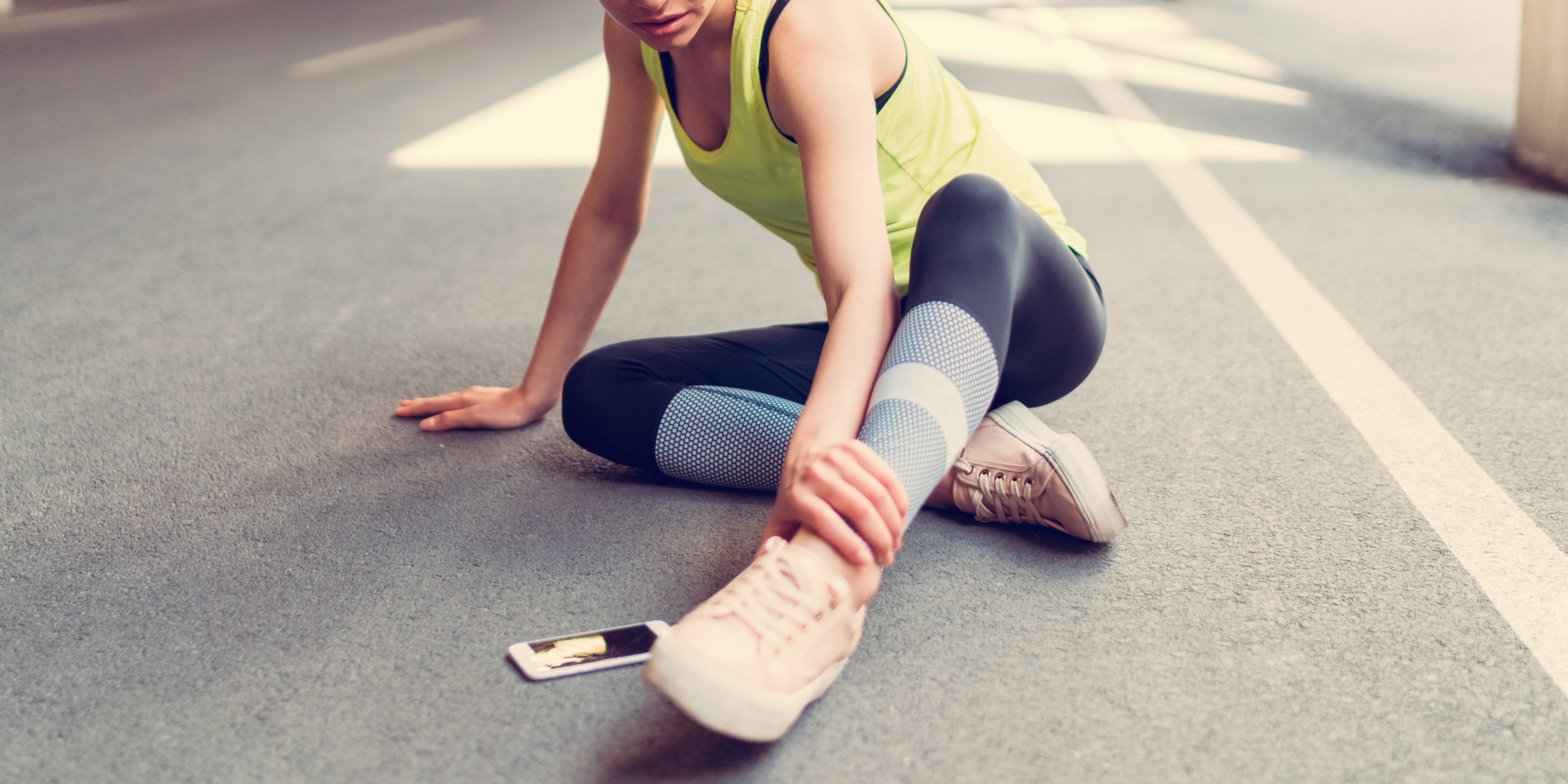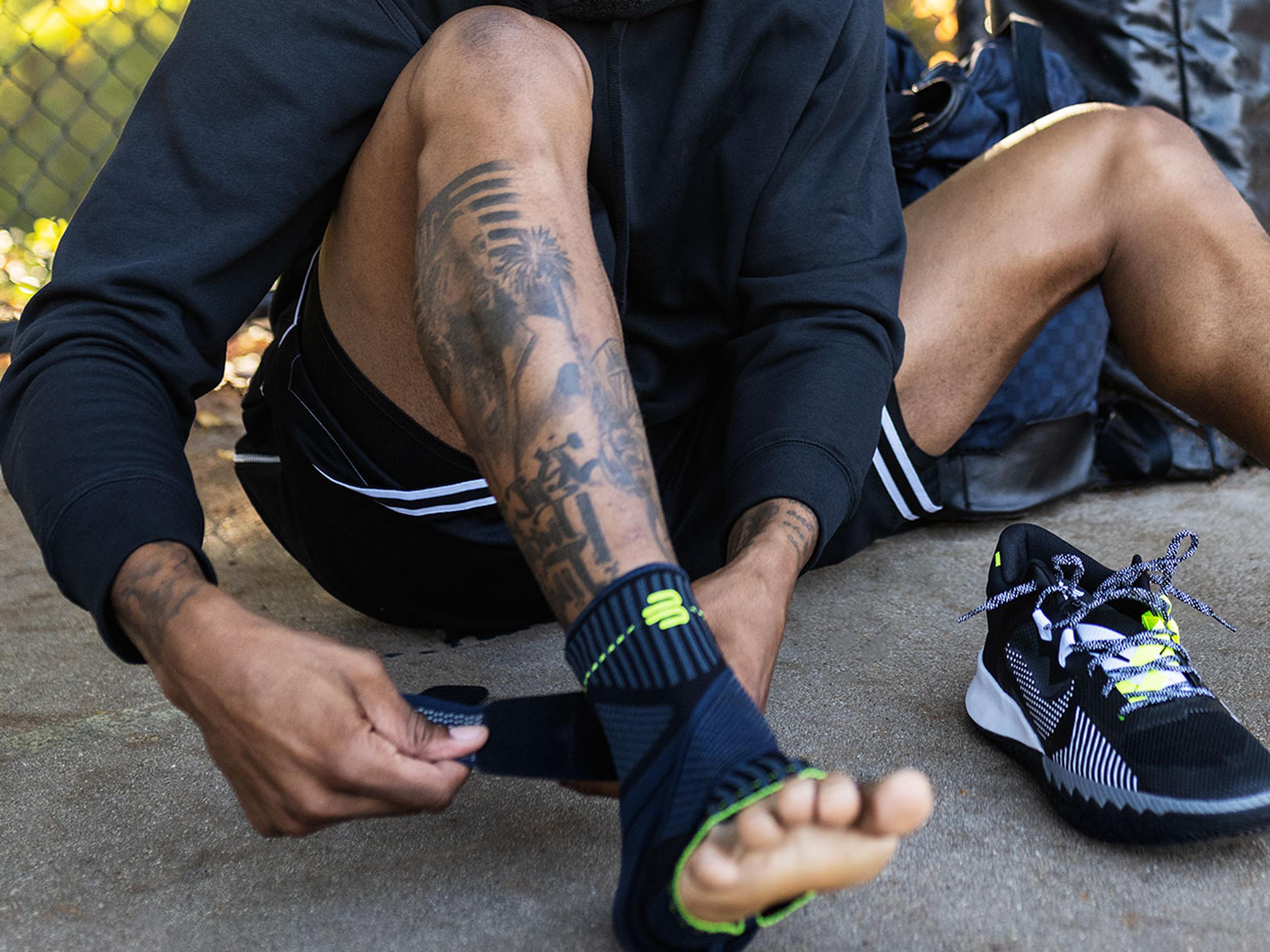3 Science-backed ways to help you prevent ankle sprains
Preventing ankle sprains should be a top priority for anyone who likes to keep active or play sports. If you're looking for treatment advice for ankle sprains, you can find it here.
Let's begin.
To help prevent ankle sprains, we advise that you:
1. Improve your ankle proprioception and balance
What is proprioception?
Proprioception (or position sense) is the ability to sense the position of your body in relation to the things around it. For example, it allows you to walk without looking at your feet.
Why is proprioception important for preventing ankle sprains?
With good proprioception, you're less likely to sprain your ankle because you'll be able to know where your foot is and how it's positioned and correct it if necessary. It's especially important for any activity involving running or jumping, as these are some of the most common ways people sprain their ankles.
How do you improve your ankle proprioception?
The best way to improve your proprioception is through balance and coordination exercises. Below, we’ll show you a couple of the most common ones. But if you’d like to try others, the injury prevention plan in our app has many more.
Examples of common ankle proprioception exercises:
Balance with eyes closed
Instructions
- Stand close to a sturdy object to hold onto if you lose your balance during the exercise.
- Tighten your core muscles gently, shift your weight to one leg, and lift the other leg off the floor.
- While balancing on one leg, close your eyes.
- If you lose your balance, open your eyes immediately and steady yourself.
- Keep your foot as still as possible during the exercise, trying not to let it roll in or out.
- Aim to balance on one leg for 30 seconds. If this is too difficult, do it for as long as you are able, then add more time as your balance improves.
- Switch legs and do the same on the other side.
- Repeat 3 times on each leg.
Single-leg deadlift
Instructions
1. Stand with your feet hip-width apart, and your knees slightly bent.
2. Place your hands on your hips or hold your arms in front of you.
3. Shift your weight to one leg, straighten the other leg out behind you and rest only the tips of your toes on the floor.
4. Tighten your core gently, slowly bend at your hips and move your upper body forward and leg backward until they form a straight line.
5. Pause when your upper body and leg are almost parallel to the floor.
6. Keep your back straight throughout the exercise - it helps to focus on keeping your chest open and up.
7. Ensure that your foot doesn't roll in or out, and your pelvis stays level throughout the exercise.
8. Reverse the movement to return upright.
9. Do 12 repetitions, then switch legs.
10. Do 3 sets on each leg.
Remember, the slower you move, the more challenging this exercise is! And it comes with a bonus effect!
Besides improving your balance and coordination, it also strengthens your glutes, hamstrings, and lower back muscles — all essential components for keeping you injury-free and performing well.
If you'd like step-by-step guidance along the way, the Exakt Health app can help. It's packed with easy-to-follow exercises and tips.
Another way to help protect your ankle is to keep it more supported from the outside — starting with the correct footwear.
2. Wear the right shoes
Wear shoes that fit well and suit your activities
Fit
Your shoes should ideally be lightweight, comfortable, and suit your natural foot shape and movement patterns. The less aware you are of your shoes while wearing them, the better fitting they are!
Activity match
Your shoe choice should provide the correct type of ankle support for the activity you're doing. So pay attention to the exercise intensity and the surfaces you'll be on. For example:
If you're unsure about what shoes to choose, it's best to ask your Physical Therapist or podiatrist for advice. Once you have their suggestions, it's a good idea to visit a reputable athletic shoe store specializing in shoe fitting.
This way, you'll understand what level of support your ankles need, then get a chance to test a range of shoe styles that suit you for comfort, form, and fit.
Replace your shoes when necessary
Remember that your shoes have a shelf life. Once their cushioning and support wear down, it can put you at a greater risk of injury, including ankle sprains.
Podiatrists suggest you replace your athletic shoes when they show signs of wear and tear or if you've had them for over 12 months. Some guidance mentions replacing your running shoes after 300-400 miles. But, this can't be applied to everyone because of the vast range in runners' weights, running styles, and shoe types.
Instead, keep an eye on how your shoes look and feel. If they start to feel uncomfortable or look worn down, it's probably time for a new pair.
3. Use ankle taping and bracing for extra support when necessary
When to use ankle taping or braces
Research suggests that ankle taping and bracing prevent ankle sprains effectively, especially when you have a history of ankle injuries.
You can use them as an additional layer of support for your ankle when you get back into exercise after an ankle sprain. And as a preventative measure during high-risk sports involving running, jumping, or quick changes in direction—regardless of any past ankle injuries.
Taping and bracing may help prevent ankle injuries on a number of levels:
Which is better, taping or braces?
Braces evolved from taping as a more permanent solution to keeping the ankle secure during sport.
There's evidence that ankle braces may be slightly more effective at helping prevent ankle sprains than rigid taping. But, both are better than having no support. Also, combining a brace with balance exercises may increase your protection against ankle sprains.
Since braces and taping seem to have similar effects on ankle sprain prevention, choosing between them usually depends on your personal preferences and needs as an athlete.
Each has pros and cons, and weighing them up can be a good place to start when you need help deciding what to use. If you’d like to learn more about this, we’ve discussed ankle braces and taping for ankle sprains in detail here.
Conclusion
So, there you have it! Three simple ways to help prevent ankle sprains are to:
These strategies will help keep you safe and on your feet, doing the things you love.
The Exakt Health app is the perfect partner in injury prevention. It gives you tailored exercises and helpful advice as part of a holistic, science-backed approach to keeping you injury-free and active!


